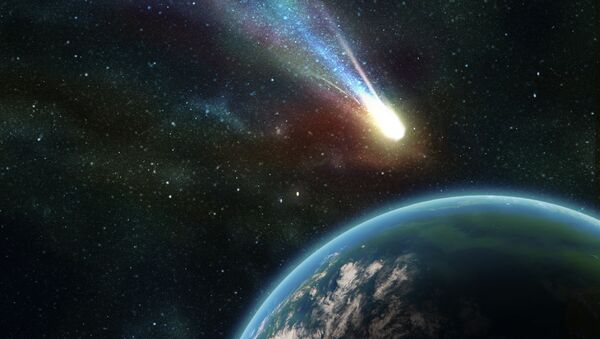The asteroid, belonging to the Aten group of asteroids between 11 and 34 meters in diameter, was spotted by scientists at the University of Arizona-based Catalina Sky Survey just two days before the close flyby, primarily due to its low reflectivity and 16-kilometer-per-second speed.
AG13 buzzed our planet at 7:47 a.m., at a distance of about 200 000 kilometers, cosmically a near miss. The asteroid came within half the distance between the Earth and the moon, which can be clearly seen in the video released by Slooh observatory.
We caught newly discovered asteroid 2017 AG13 as it made an extremely close approach to Earth this morning. It was closer than the Moon! pic.twitter.com/uKjWzGXmMA
— Slooh (@Slooh) 9 января 2017 г.
An "Impact Earth" simulator, created by researchers at Purdue University, calculated that at an atmospheric collision angle of 45-degrees a space rock the size of AG13 would have exploded into smaller pieces, releasing around 10 times the energy of the atomic bomb that was detonated over Nagasaki.
Detecting approaching space rocks in advance is crucial. Various telescopes and sky surveys constantly scan Earth's neighborhood to track and characterize nearby asteroids.
In 2005, the US Congress directed NASA to identify at least 90 percent of potentially hazardous NEOs sized 140 meters or larger by the end of 2020.





